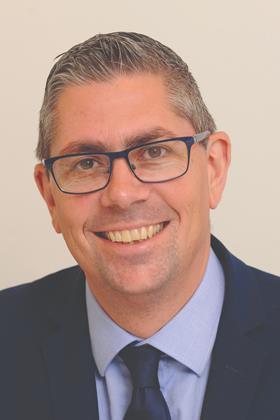Three specialists discuss how the insurance sector can tighten its defences against fraudulent activity

Gary Humphreys group underwriting director, Markerstudy
“Most online insurers exhibit a very high level of fraud protection. Fraud in insurance is no different to any other crime in society in the sense that once you plug one hole it will look for another one. And so we’ve seen examples where fraud has been driven away from the online journey into more offline journeys because the fraudsters become aware of the online checks. Then it manifests itself in identity fraud to get around the checks that are made online.
“It’s a constantly evolving battle and the industry works hard at combating fraud. A lot of money and effort is expended on it.
“There’s education to be done in fraud. Do enough insurance customers realise the consequences of fraud in the claims arena? I don’t necessarily mean systemic or deliberate fraud, but also more of the innocent fraud where you get exaggerated claims.
“I’m not sure customers genuinely believe or are aware that cost affects future pricing. That’s probably where the industry can do more to educate people.”

Graeme Trudgill executive director, Biba
“Biba is committed to tackling and reducing fraud. It was part of the Insurance Fraud Taskforce, has worked closely with the Insurance Fraud Bureau (IFB) and Insurance Fraud Enforcement Department (IFED) and was fundamental in getting claims management companies regulated by the FCA from April 2019.
“Detecting fraud is one side, but more education is required so that customers understand the consequences of exaggerated and fraudulent claims. Data sharing is an essential component of combating fraud and initiatives such as the Claims and Underwriting Exchange and MyLicence, in addition to general data sharing, have helped, along with organisations such as the IFB and IFED.
“The Civil Liability Act and Litigants in Person (LiP) portal will further help to combat fraudulent whiplash and personal injury claims. We need the government to lay the appropriate secondary legislation as soon as possible.
“Insurers are also now investing heavily in big data/data analytics technology which helps to detect fraud trends and those individuals or organisations responsible.
“These actions all enhance fraud prevention and are making a difference in the number of incidents now being detected and prosecuted. However, the battle is not won. Fraud is ever evolving, but continued investment in detection methods and data sharing will make it harder to commit and easier to detect.”

Martyn Mathews, senior director of motor and telematics, LexisNexis Risk Solutions
“The insurance industry has clearly woken up to the benefits of data sharing in order to better tackle fraud over the years and that’s evidenced by the contributory data we have.
“For instance, we work with 94% of the insurance market to better understand the risk around named drivers at the point of quote so they can validate those individuals and better tailor their overall risk price.
“We can also analyse data around cancellations and gaps in cover in an effort to identify potential fraud. We now understand, for example, that where individuals have significant gaps in cover perennially, over time it can be an indicator of risk and potential fraud.
By sharing data, there is a lot more potential to identify fraud at the point of quote rather than waiting until you are actually at risk.
“Our clients are telling us that what they need to do even more now is to understand the risk associated with potential and existing customers, particularly at the point of quote, and they need to adjust our pricing to reflect any provisioning that we’ve made.
“They are looking to access the data from contributory databases in order to do this and, in particular, they are looking for what risk factors are new, to use for enrichment.
Hosted by comedian and actor Tom Allen, 34 Gold, 23 Silver and 22 Bronze awards were handed out across an amazing 34 categories recognising brilliance and innovation right across the breadth of UK general insurance.














































No comments yet